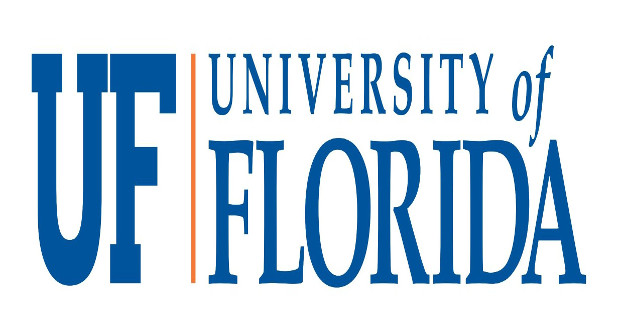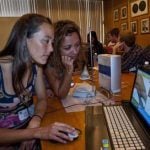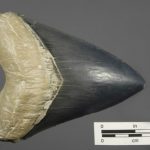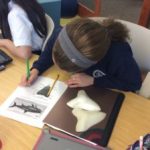The Univeristy of Florida brings 3D printing to education

Following their creation of 3D printed medical implants; the University of Florida (UF) is back in the news again for a new domain, education. Researchers at UF have been working on a National Science Foundation-funded program called iDigFossils, which offers curriculum on complex subjects in science, using 3D printed fossil replicas.
UF isn’t the first university to start looking at ways to incorporate 3D printing into education, with the University of Waterloo in Canada investing millions into it, as well as corporations such as GE and organizations like America Makes, doing their best to evolve 3D printing further within education. But, what makes UF’s 3D printing educational endeavor so interesting is that it is helping students to better visualize and understand difficult or complex topics in a way that wasn’t possible before.

Virtual model of the Megalodon teeth. Students 3D printed replicas of the 46 teeth and used them to estimate Megalodon’s length. Photo// Jeff Gage
To bring their program to life, UF took fossils from the Florida Museum of Natural History’s digital collections, which included bones from three-toed horses, giant ground sloths, and a Megalodon, the world’s largest shark. Taking these digital collections, the University was able to create replicas of them using 3D printing.
Working with students in grades K-12, UF created interactive lessons that encourage the students to be inquisitive and flex their brain muscles to think like scientists. In order to create these lessons, researchers worked alongside K-12 teachers to design and create “brain-stimulating activities.” In addition, by using 3D printed replicas of fossils, students were able to interact with fossils in ways that aren’t possible when they’re behind a display case. “This is revolutionizing how kids interact with fossils by enabling them to have hands-on experiences with specimens they otherwise wouldn’t have access to,” said Bruce MacFadden
- Claudia Grant (right), helps a science teacher at a scanning workshop. Photo// Jeff Gage
- A Megalodon tooth Photo// Kurt Auffenberg
- A student works with the Megalodon teeth Photo// Megan Higbee Hendrickson
Following a lesson on the Megalodon, a survey was conducted on 26 students to see their thoughts and their moods on the lesson. The results showed that 74% agreed that the hands-on activities were an effective method of instruction, with one student noting, “Having access to a 3D printer allowed us to grasp things differently. Being able to physically hold something in your hand … is definitely very engaging. I have never been to a science class where everyone was so engaged with what was going on.” Teachers are also reporting an increase in student excitement when using the 3D printed fossils in the classroom, allowing the students to be engaged and take part in their own education.
“One of the advantages of using this approach is that we can engage kids who are totally uninterested in science or who often get left behind in traditional STEM classes,” explained Claudia Grant, Florida Museum Doctoral student. “These lessons help show kids that don’t consider themselves ‘science people’ that their skills are still important. When you see how this works in the classroom, it’s compelling.”
If you’re a teacher or are maybe just curious, all the lesson plans and instructor notes are available for download at the link here, with the 3D files available for download here.
For those who are interested in reading the full report, you can find that here.
What do you think about the incorporation of 3D printing in education? Do you think that this has a promising future? Let us know in a comment below or on our Facebook and Twitter page! For all the latest 3D printing news delivered straight to your inbox, sign up for our weekly newsletter today!









